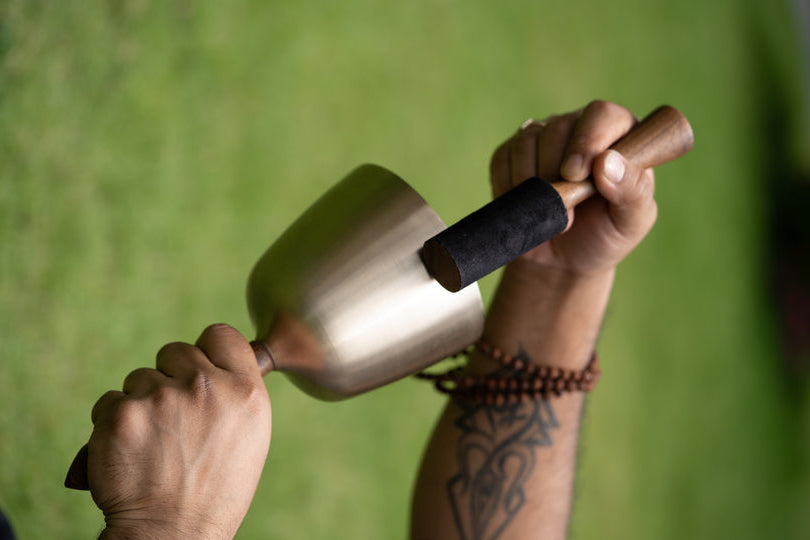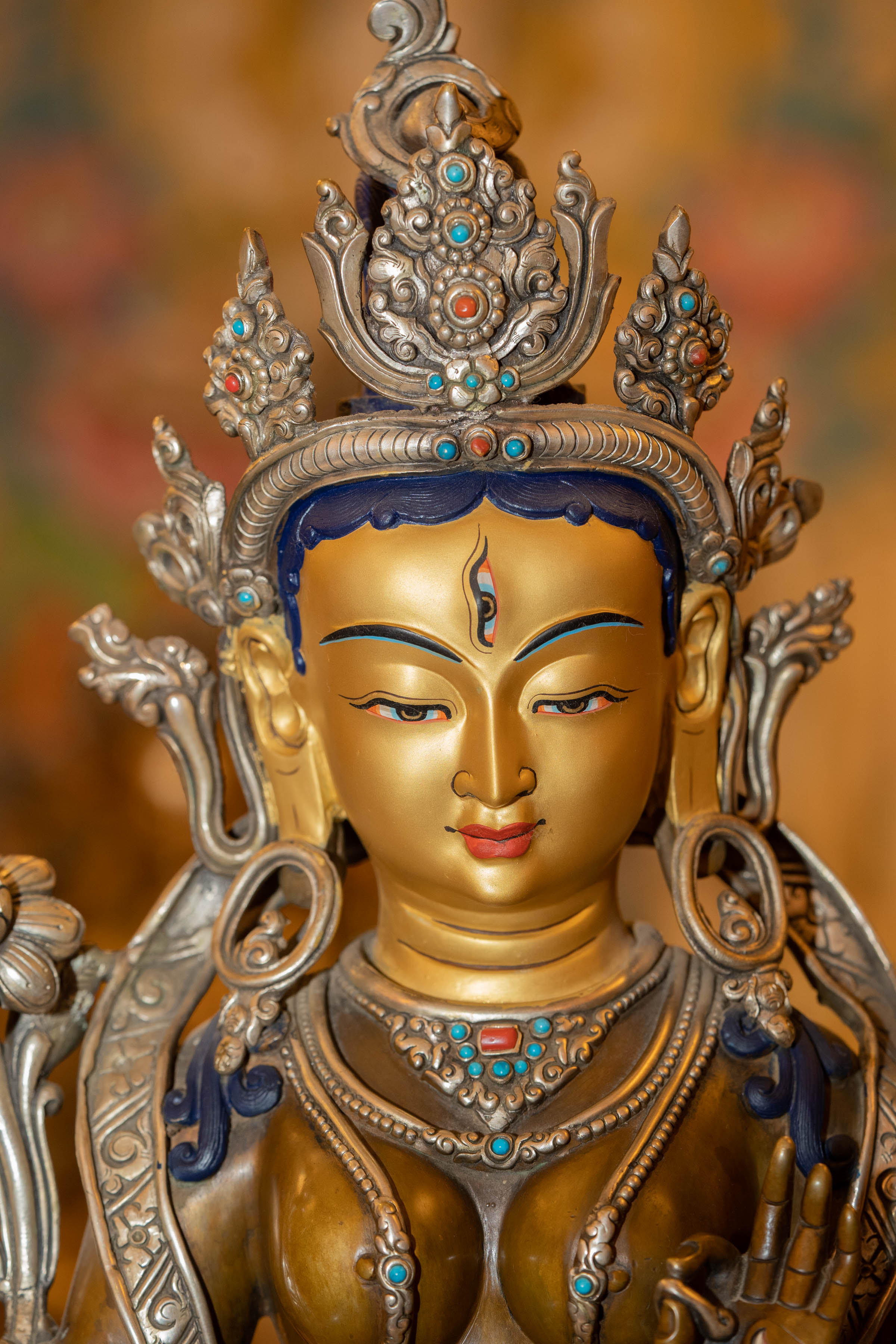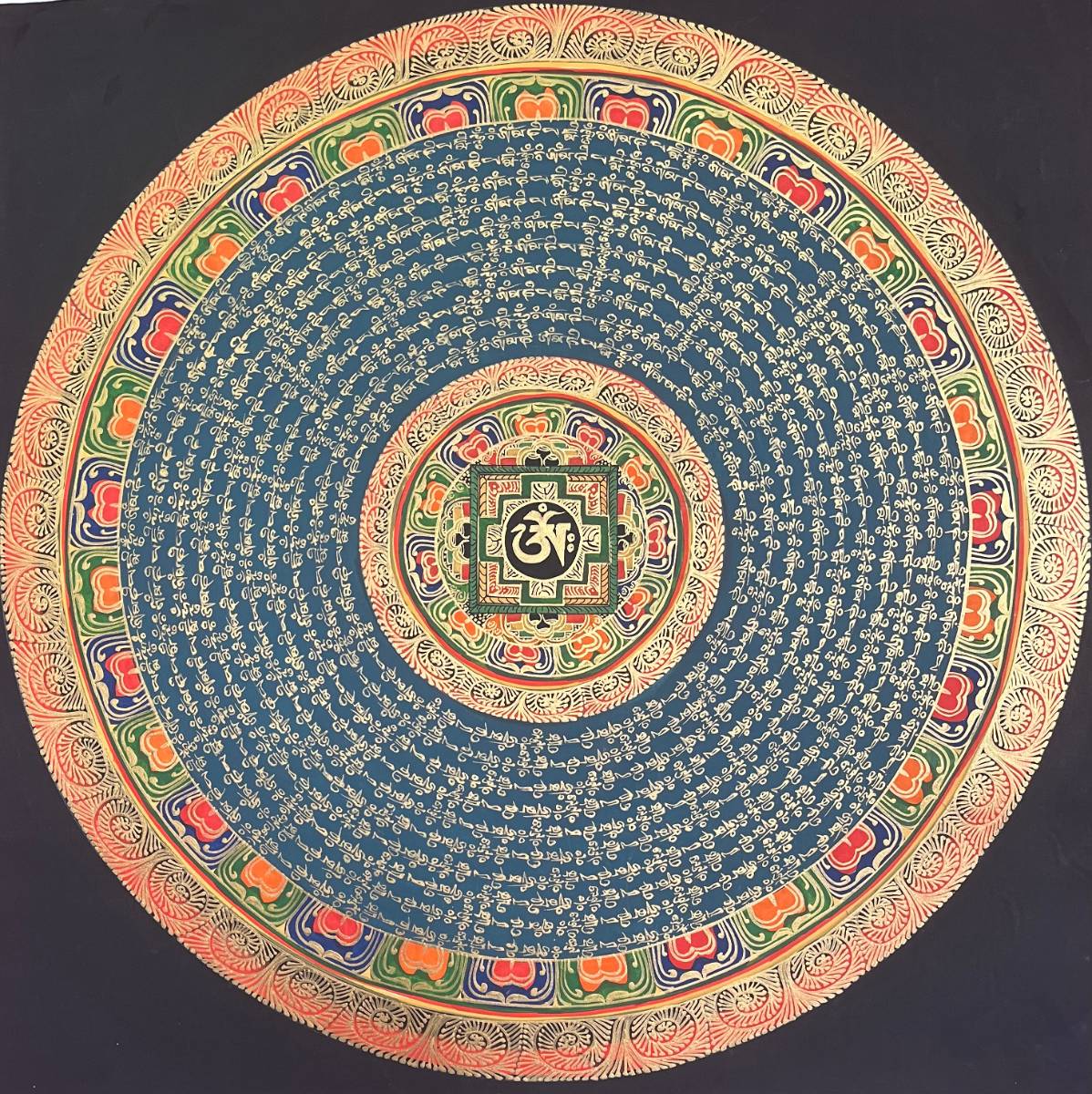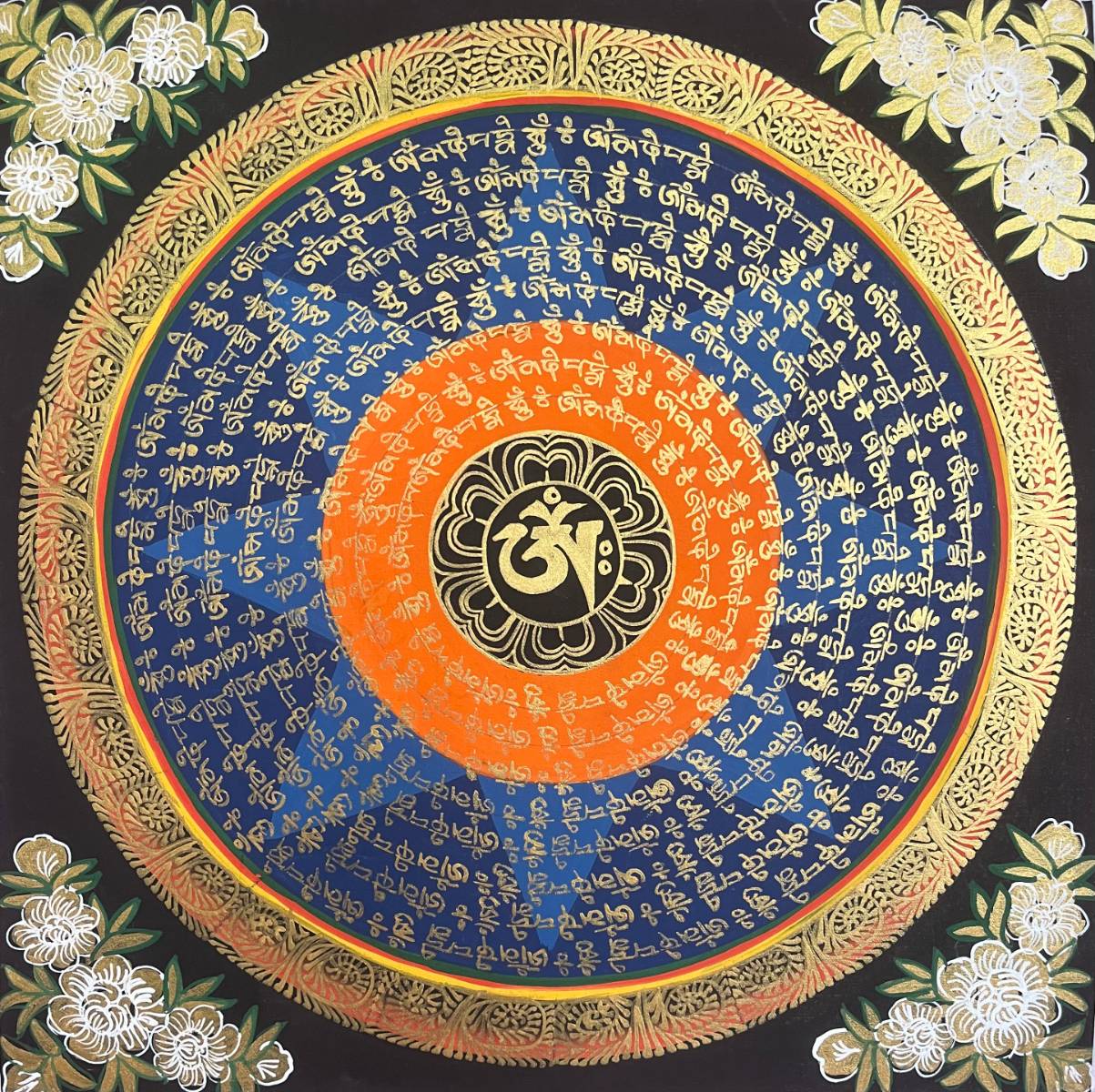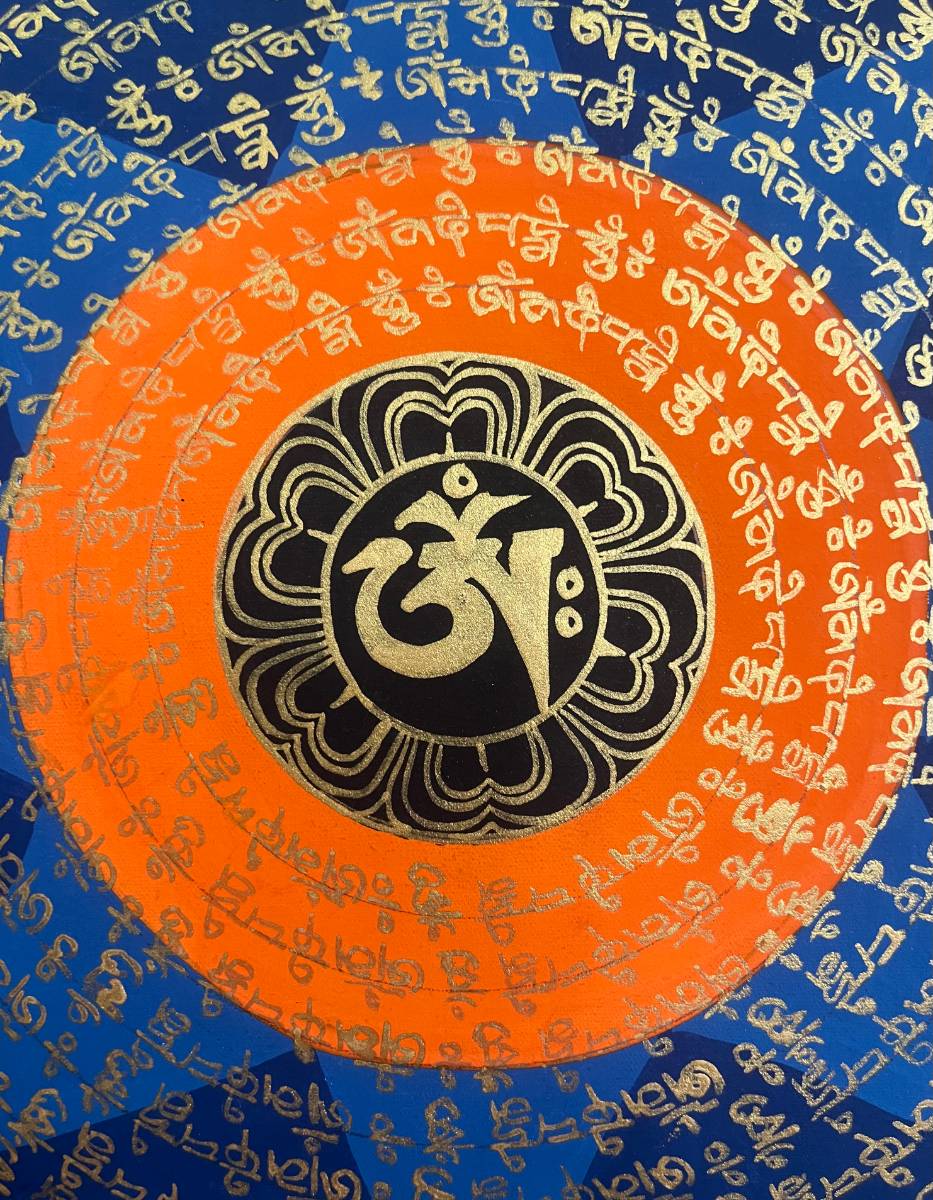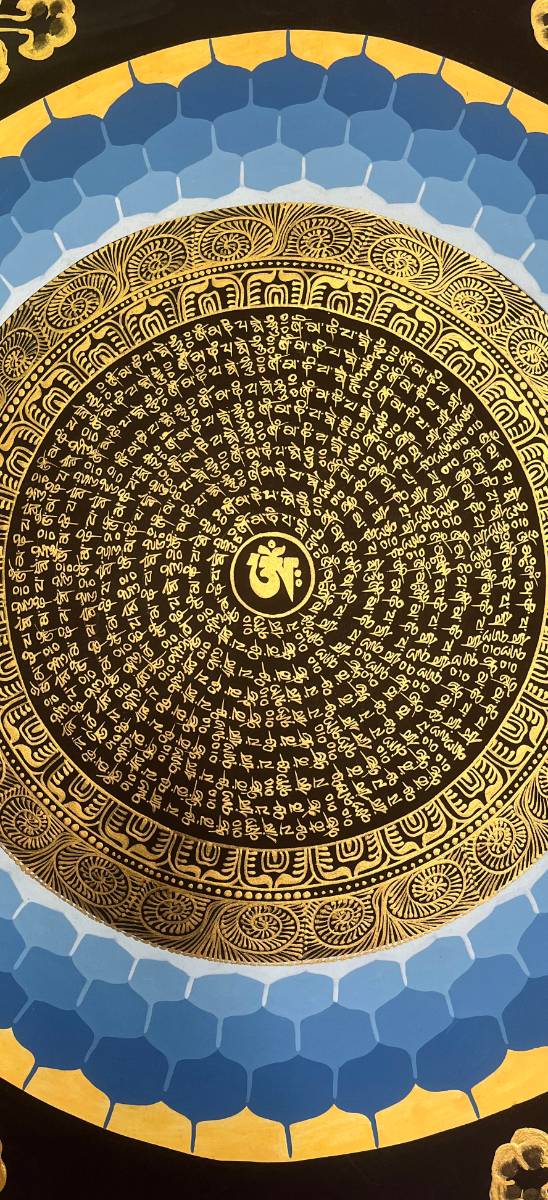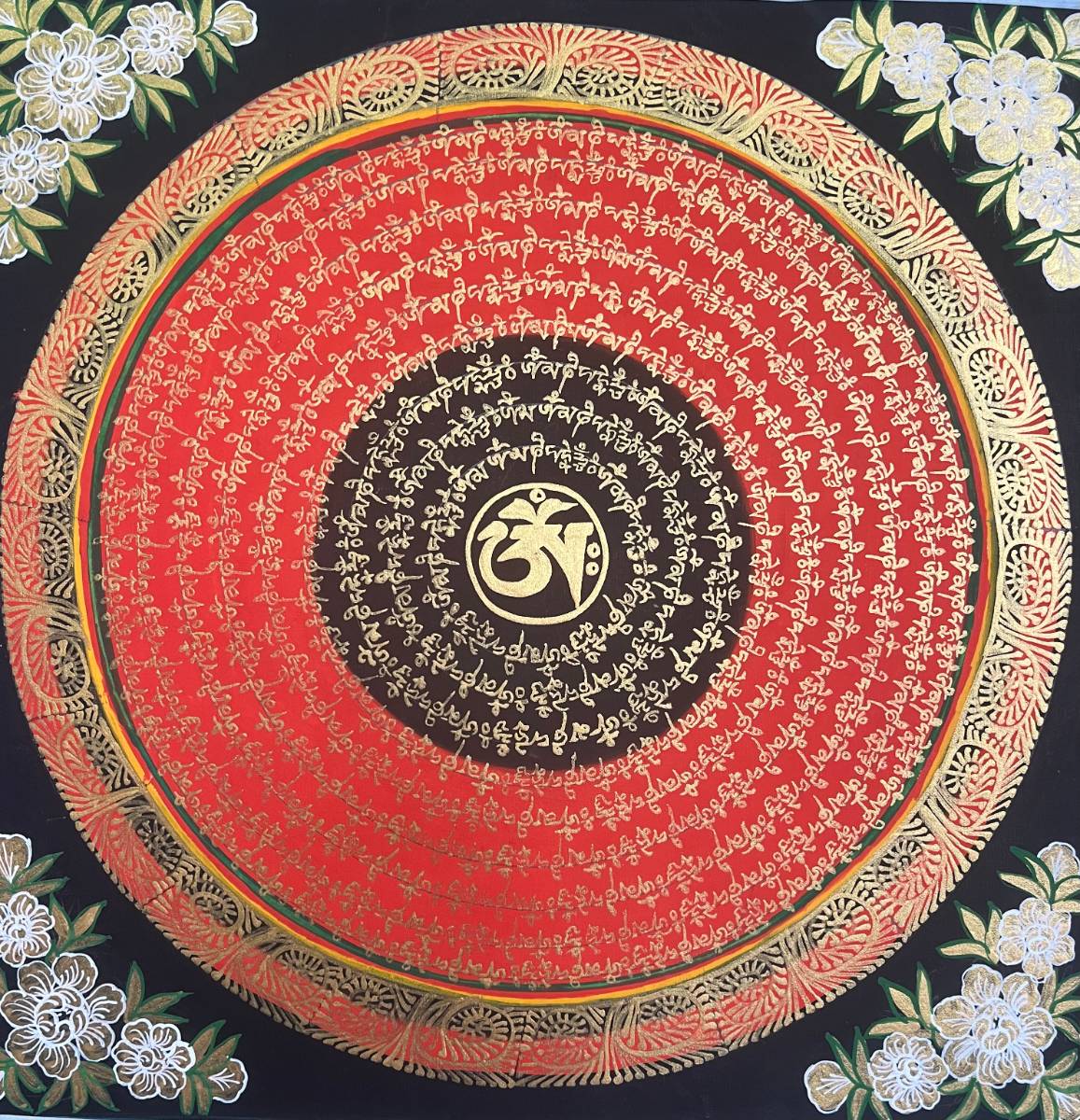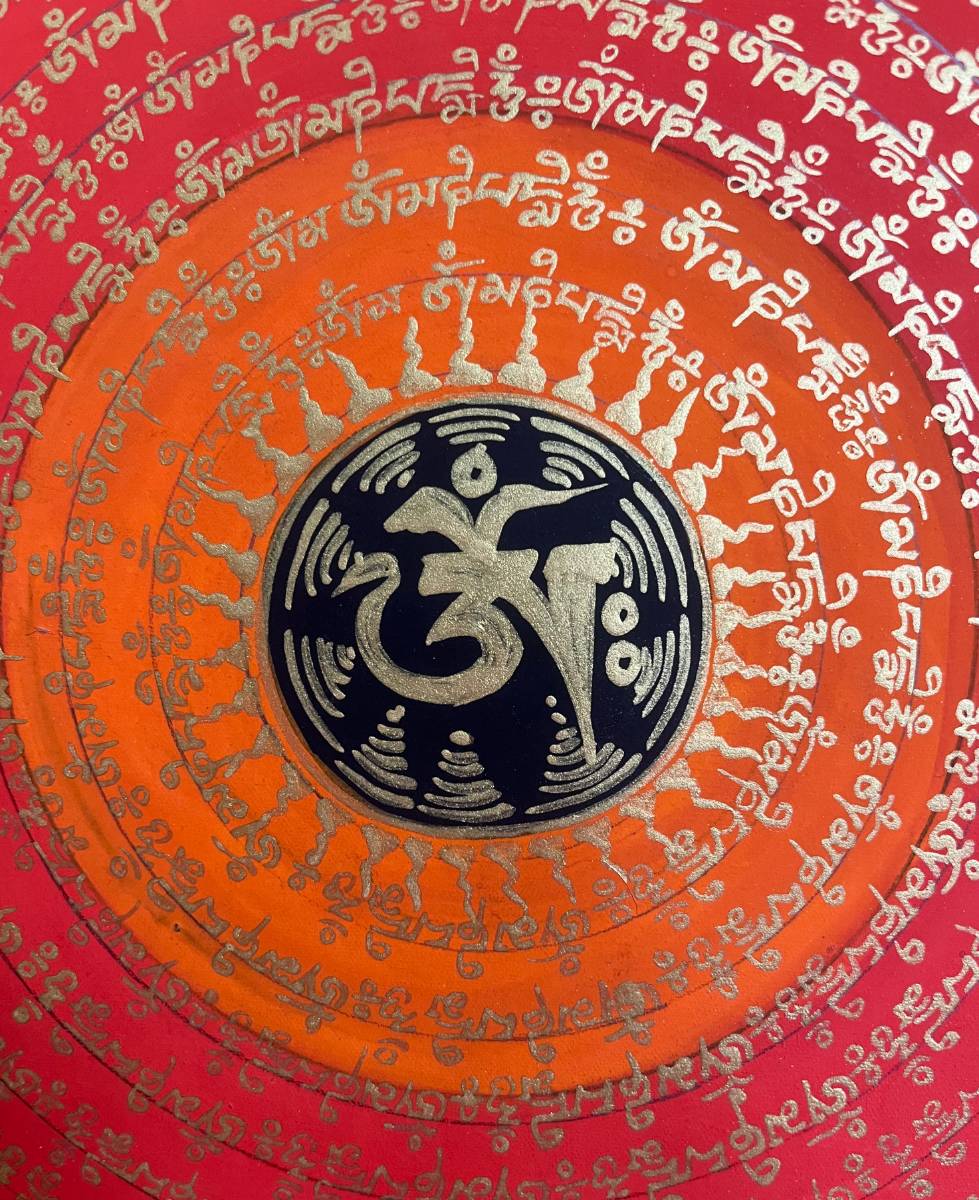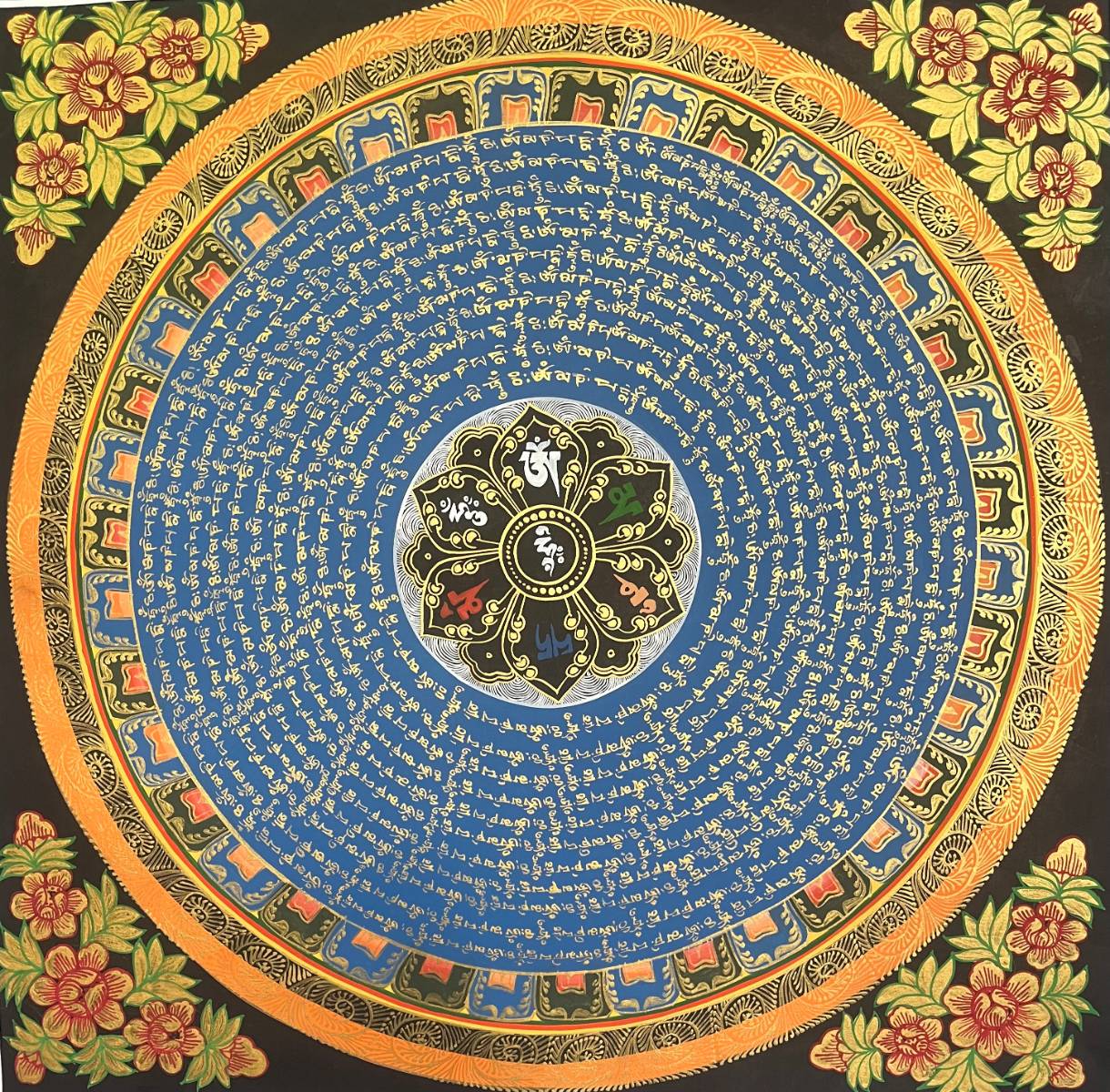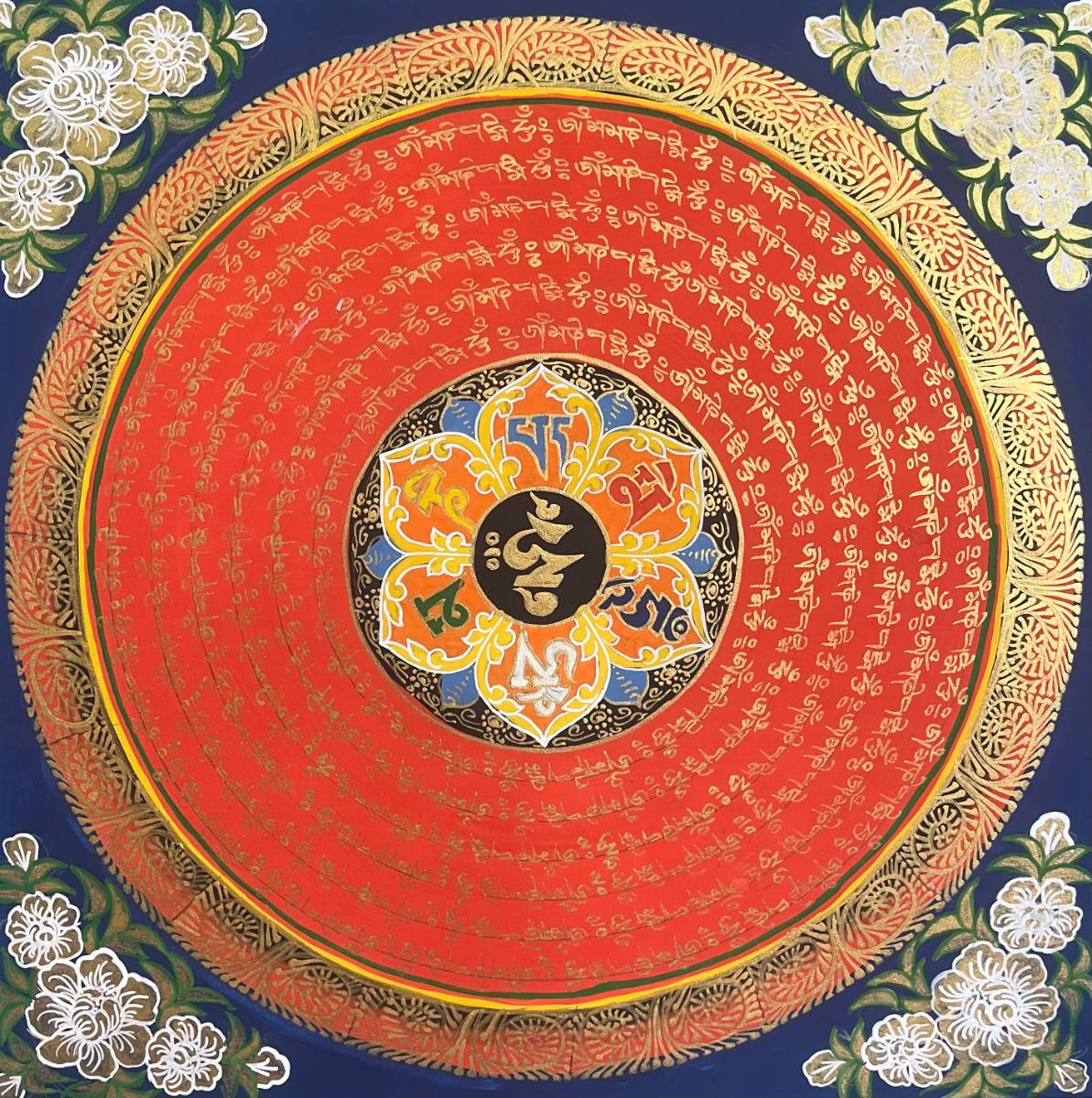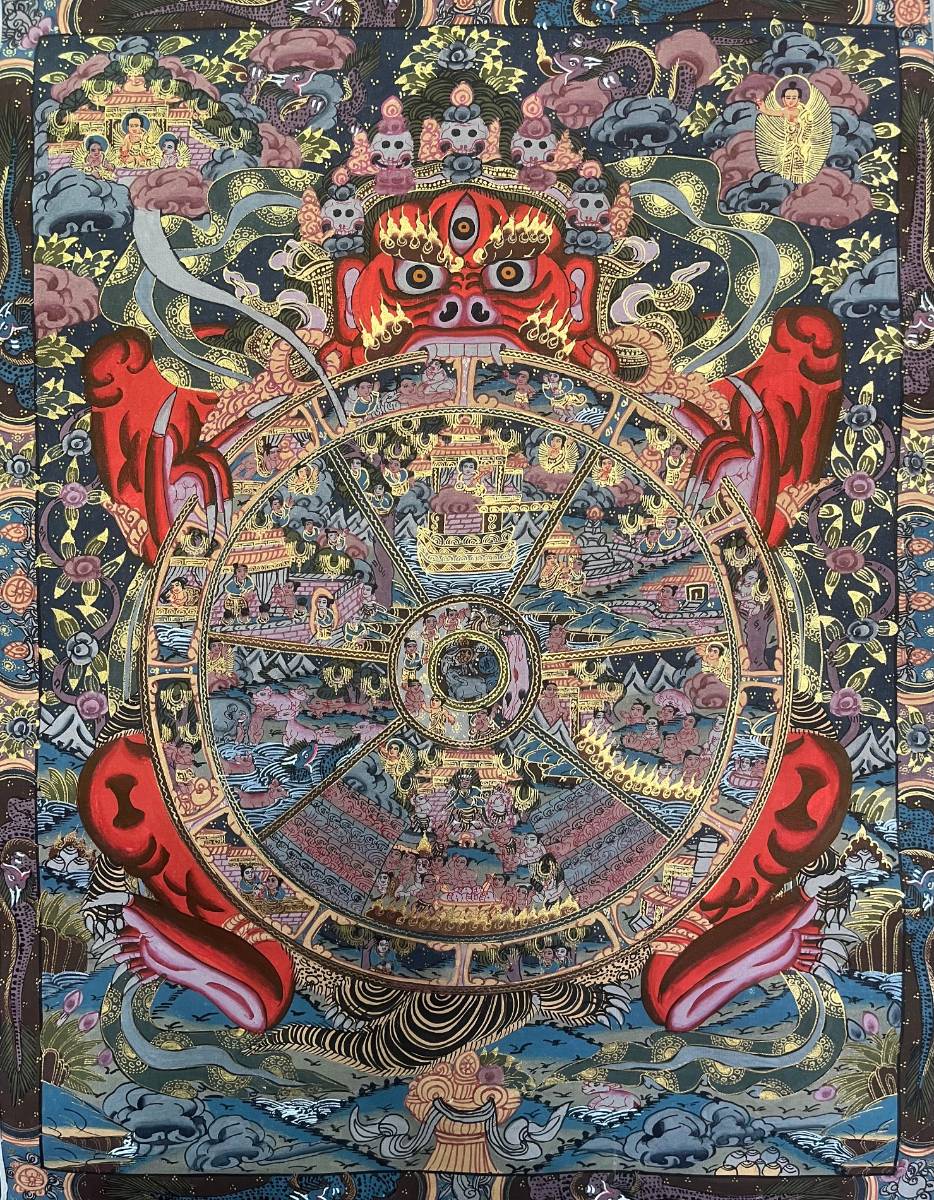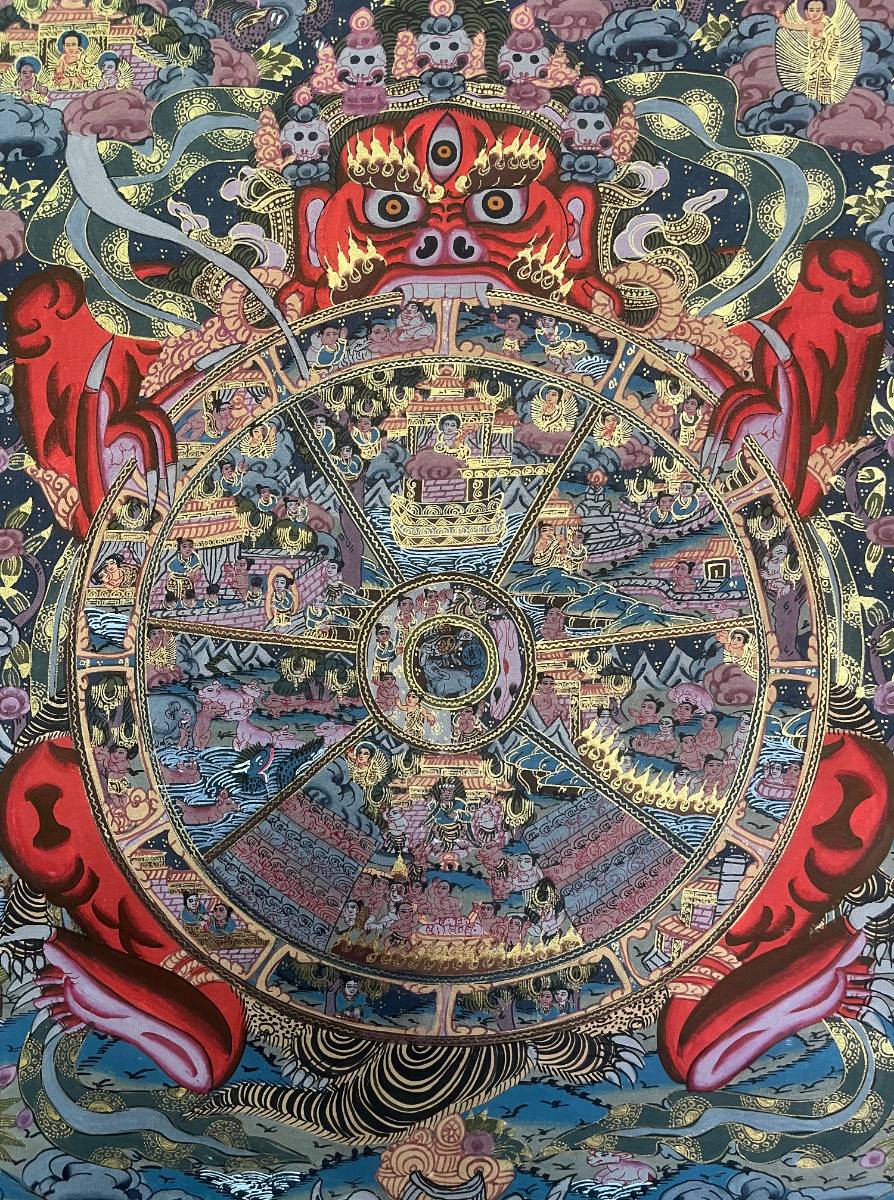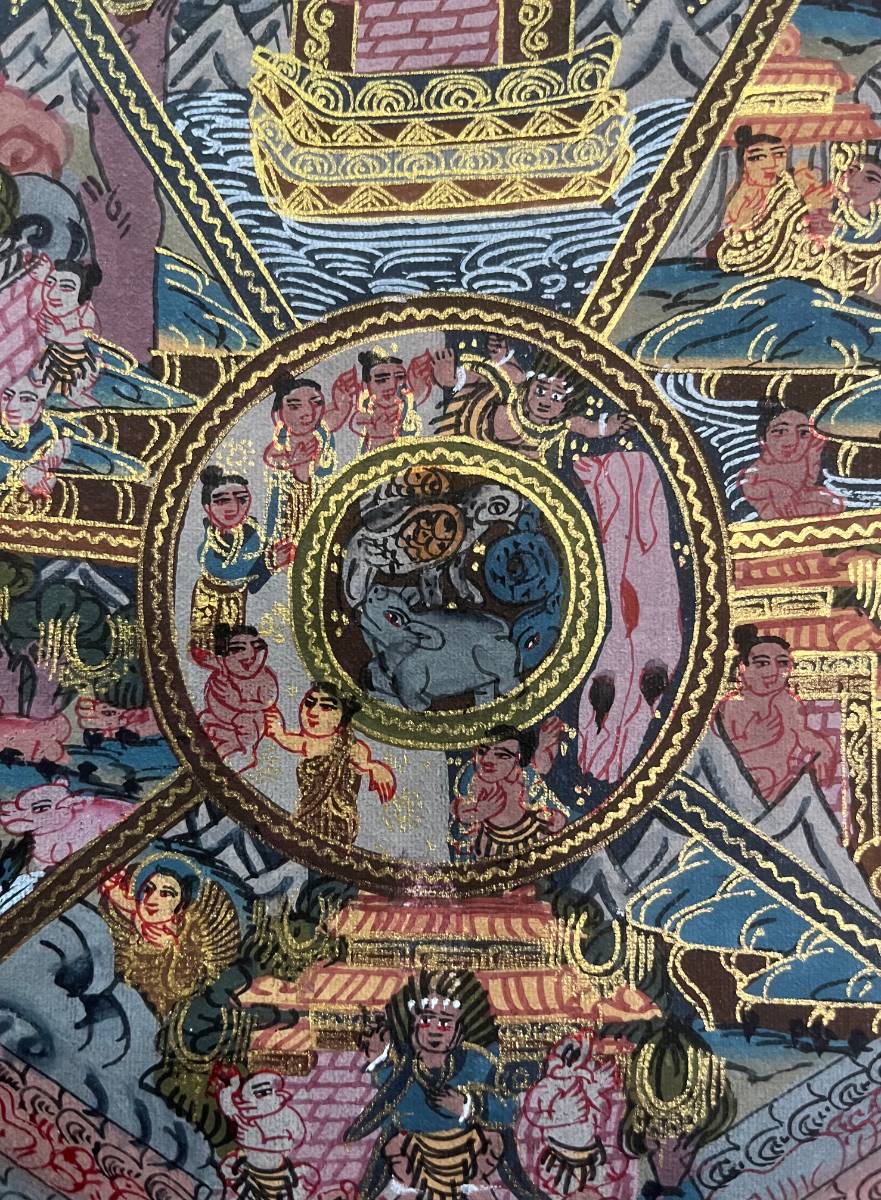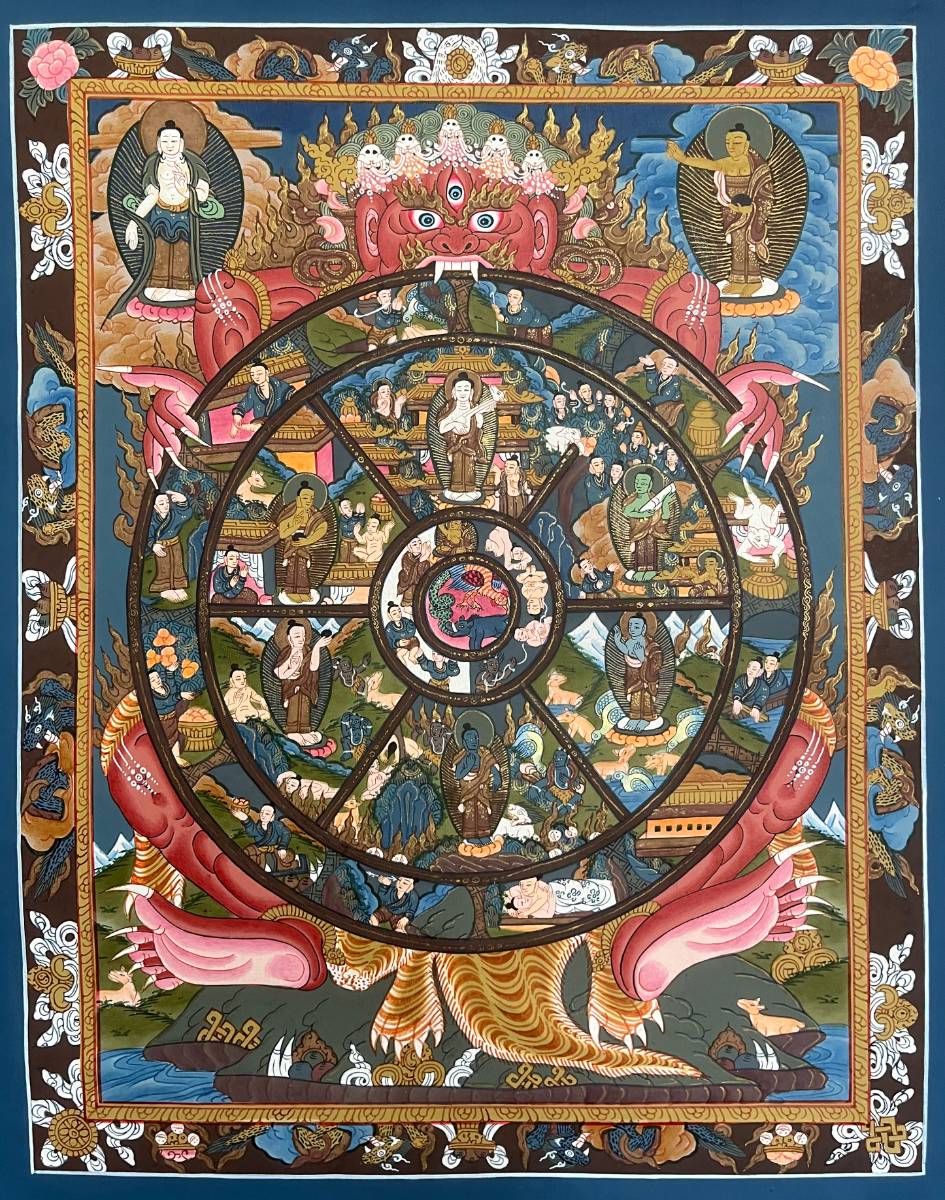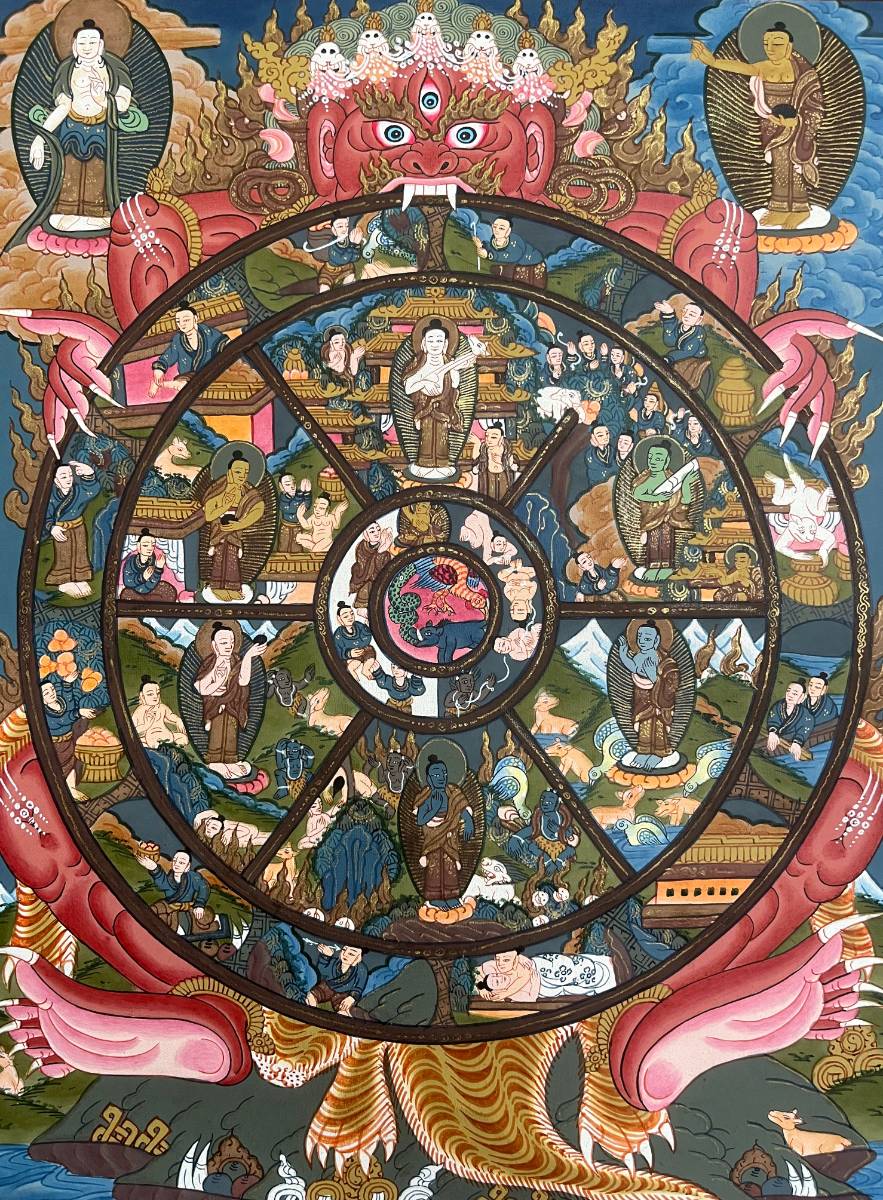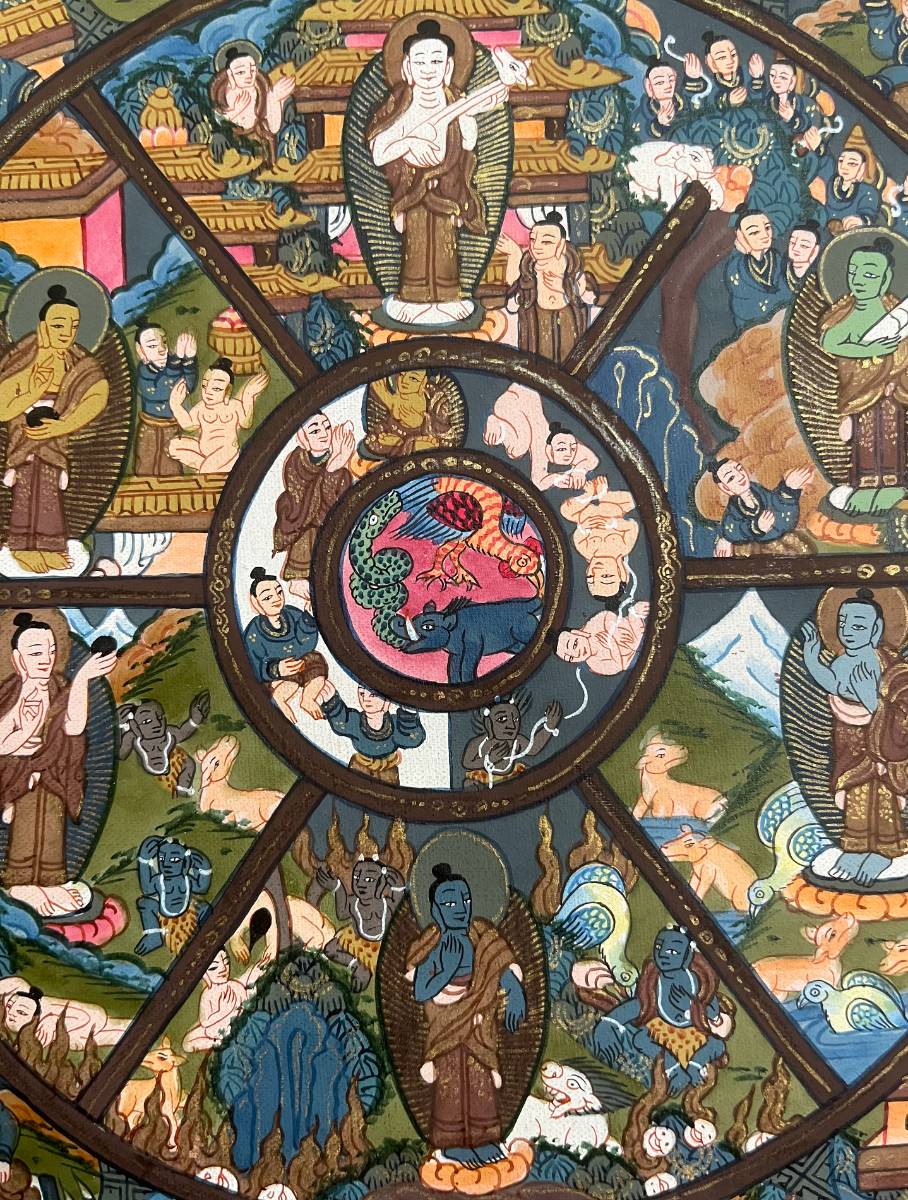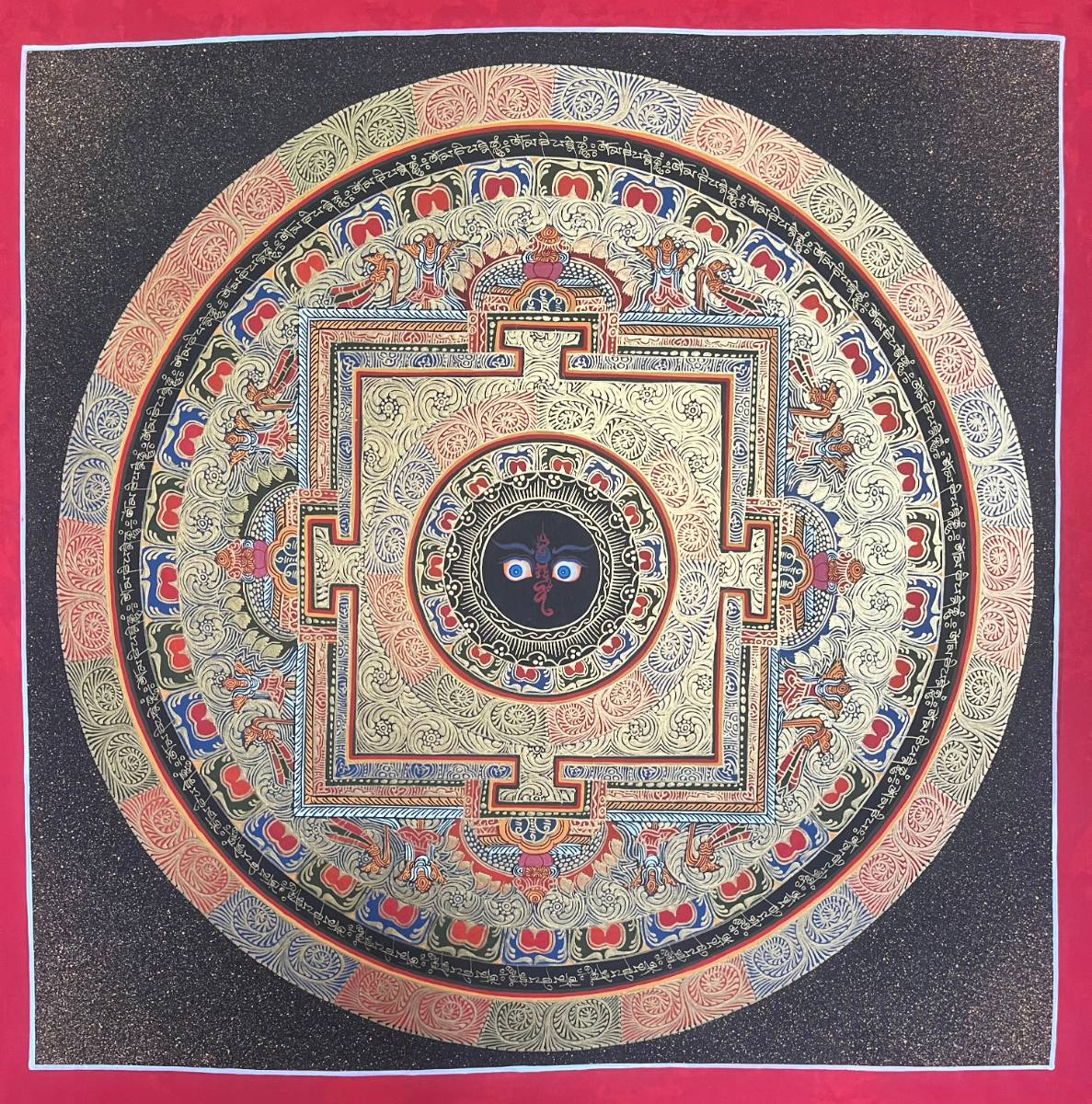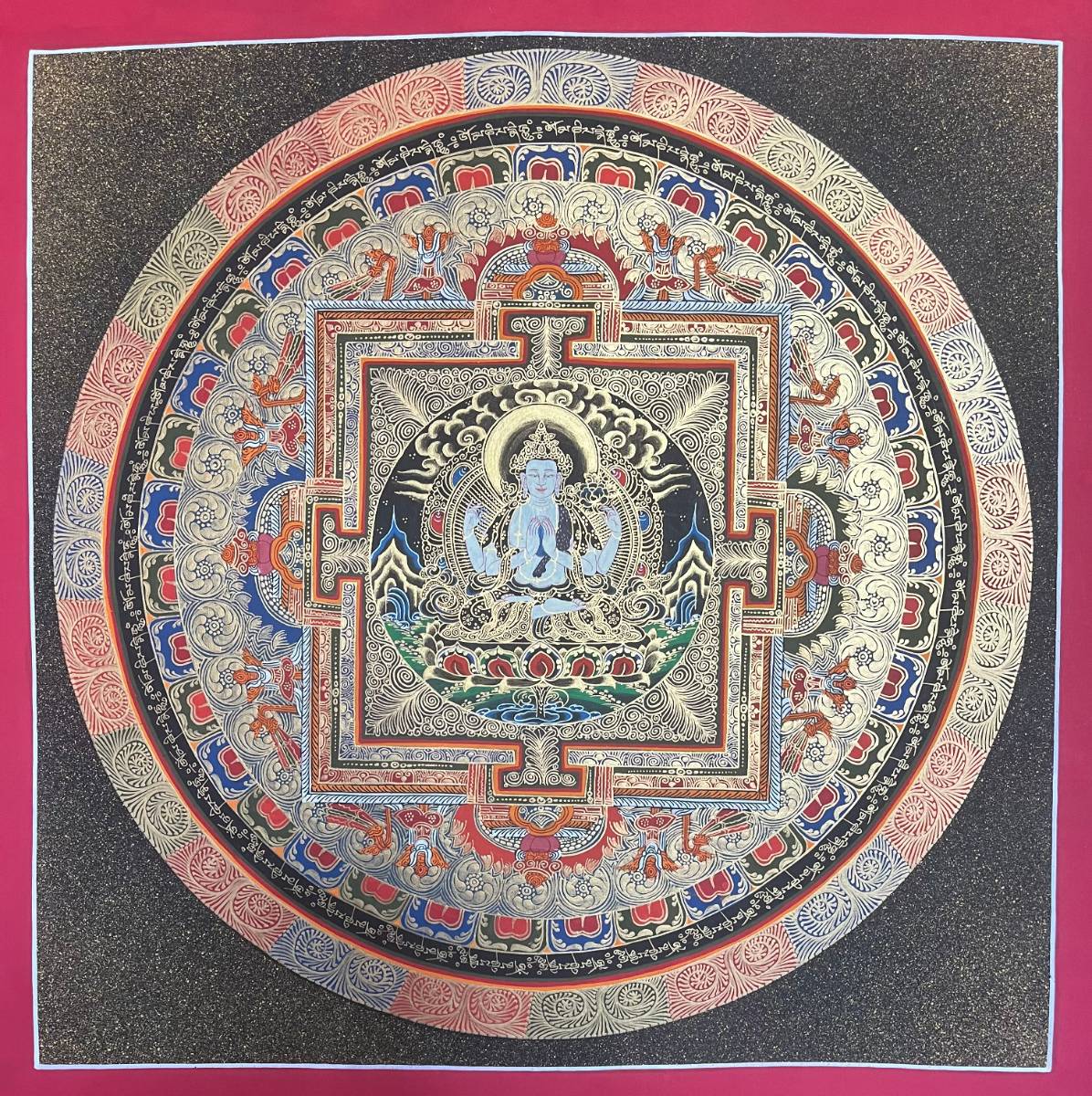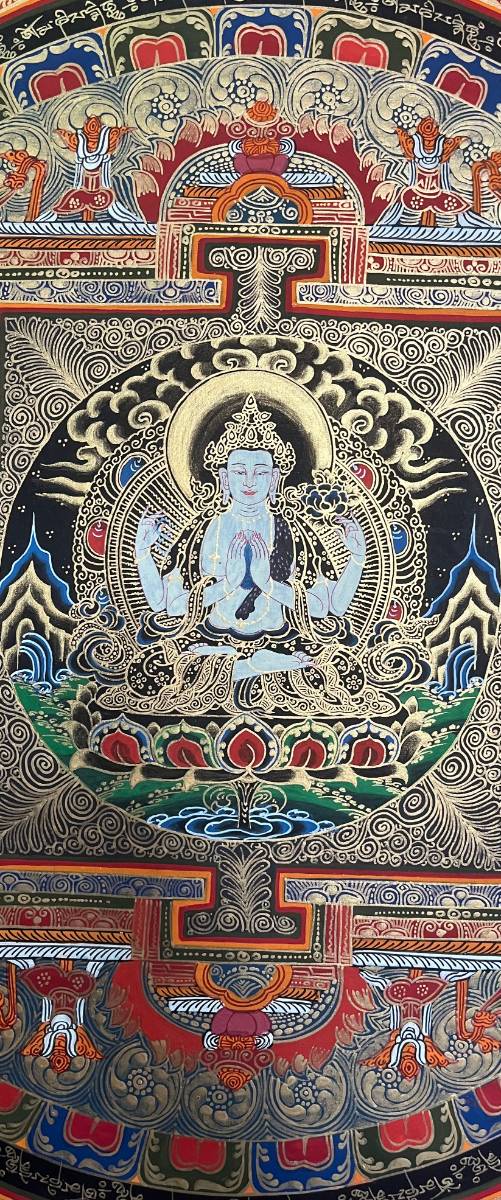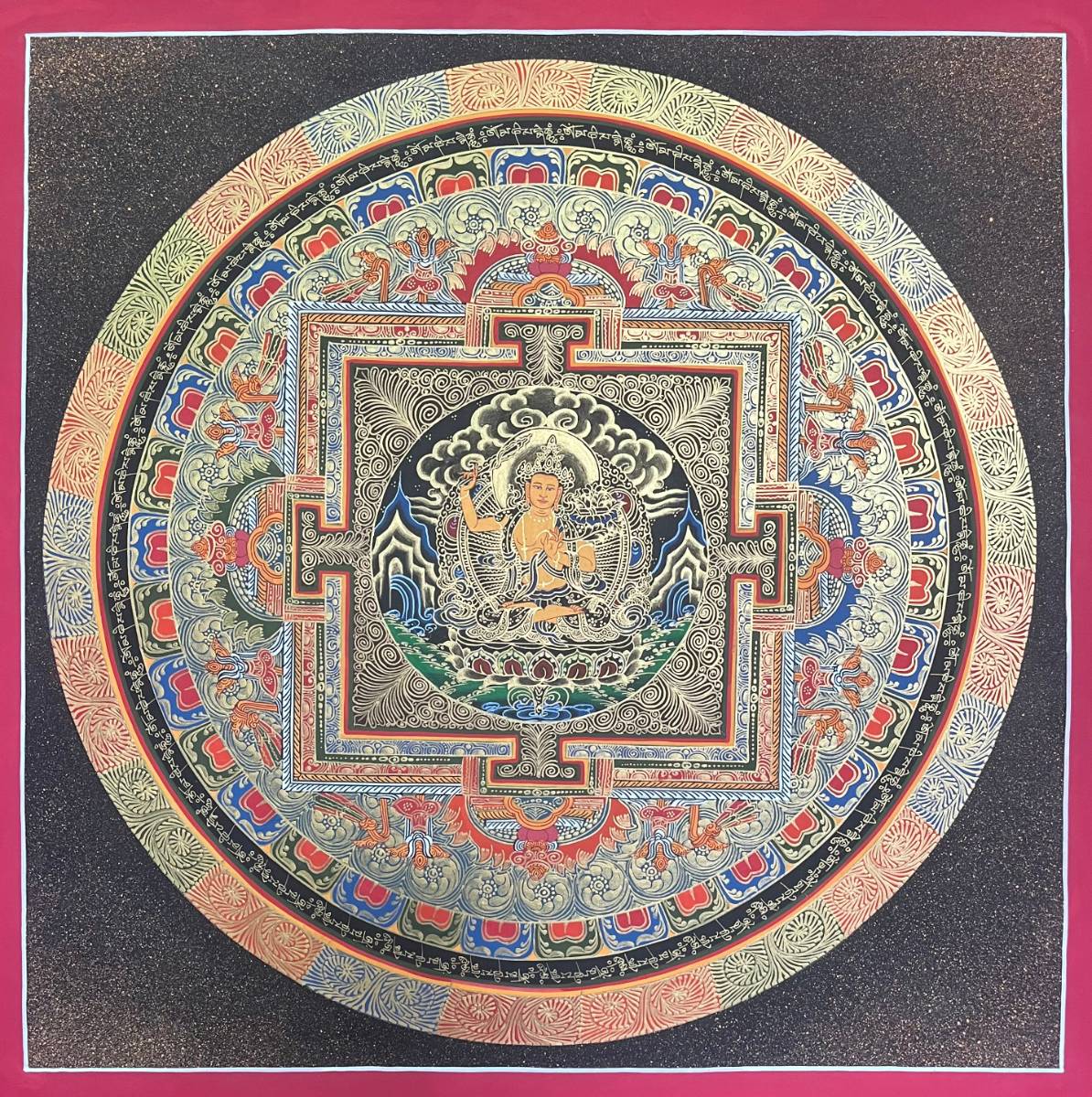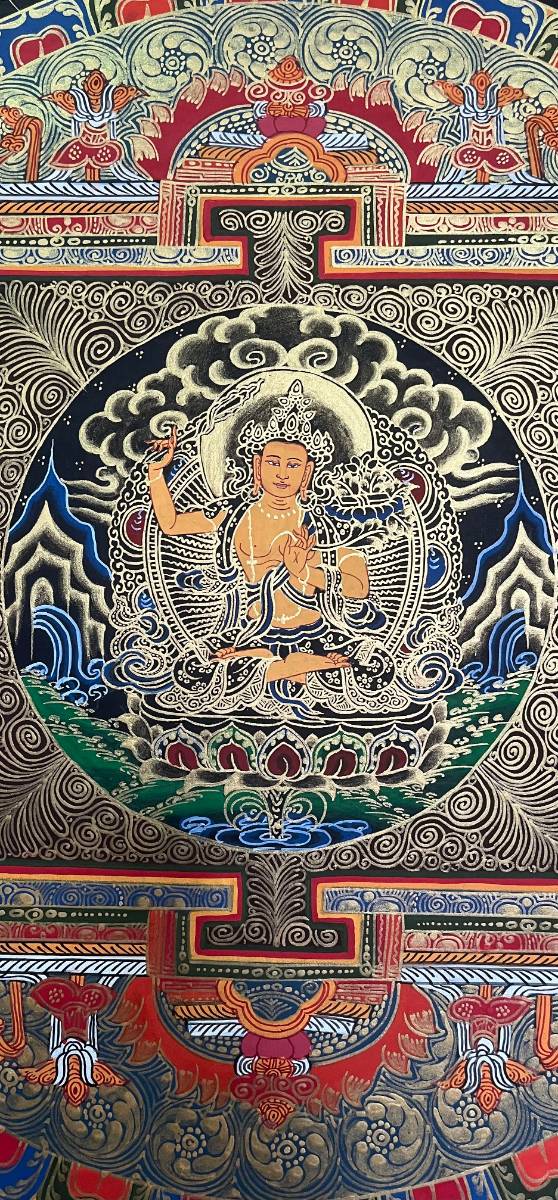Green Tara (Goddess of compassion)
Green Tara has green skin and a unique posture that sets her apart from other Taras and female goddesses. Green Tara is depicted with her right hand in the giving mudra of generosity and her left hand holding a half-opened blue lotus blossom. A mudra is a symbolic hand gesture, and the lotus represents the beauty that may be found even in the darkest of circumstances. Green Tara, in particular, has her right leg extended, ready to jump into action. She is always willing to help and support anyone in need. It is stated that you can just call out her name or chant her mantra,Om Tare Tuttare Ture Swaha. The night is represented by the green tara, which is also associated with activity and abundance. She is prayed for wealth, protection and freedom from delusions and negative emotions.
Her eyes, which are full of love and compassion, are not wide open but rather fine and slightly rounded like the loving kindness shown by a mother to her beloved only child, Tara's eyes express compassion for you. The mudra of granting sublime realizations can be seen on Tara's right hand, which is holding the stem of an Utpala flower. Her left-hand holds the stem of another Utpala blossom, with three fingers standing upstanding to connote shelter in Buddha, Dharma, and Sangha. Tara has fully developed breasts and wears a jewel necklace, jewel garlands, and a variety of scarves. Her right leg is loosened up and the left one is contracted.

Green Tara possesses the immense power of a divine being and the immense opulence of a divine being, as well as all of these precious jewels, which she can use to alleviate the suffering or poverty of all living things. She has a crown ornament that resembles a hat on the crown of her head, and a red figure is in the very center of that. The Buddha Amitabha, who is always red in color, is represented by that red figure at the very center of the reddish halo around her head. Green Tara signifies the energy winds of the body and breath, as well as the element of a Buddha that protects us from fear. Tara's influence is our ability to act, to move through life and to achieve our goals. Her name literally means "woman who ferries across."
Types of Green Tara
We can find ten different types of green tara on the basis of their symbolism, appearance, mudra, and iconography, each Tara is distinct from the others.
- Khadiravani Tara
- Vasya Tara
- Arya Tara
- Mahatarri Tara
- Mahasri Tara
- Varada Tara
- Durgottarini Tara
- Dhanada Tara
- Jahguli Tara
- Parnasaban Tara
Khadiravam Tara
In the Sadhansmala, Khadiravani Tara is depicted as being green and holding the Utasla on the left and the varada mudra on the right with two hands. She can be recognized by the presence of Asokakanta Marici and Ekajata. On her crown, she has Amoghaslddhi's image.
Vasya Tara
The European style of sitting known as Bhadrasana is Vasyatara's signature pose. She is, however, described as being single, and as such she is not accompanied by any gods or goddesses. She is portrayed by the Khadiravani class accompanied by Taras.
Arya Tara
This form of Tara is distinguished by the fact that she sits in the Ardhaparyahka posture and like Vasyatara she is completely alone. Vasyatara is said to have another name for Arya Tara. In the Ardhaparyahka posture, she is seated alone. She is green and has two arms.
Mahattari Tara
Mahattari Tara is distinguished by the Vajraparyahka posture in which she sits, as well as by the fact that she is represented alone. Mahattari Tara is a green goddess.
Mahasri Tara
Mahasri Tara is depicted as sitting on a golden throne that is covered in a variety of flowers. She has one face and two heads that are in the Vyakhyana Mudra. She wears ornaments and a crown with an image of Amoghasiddhi on it. Ekajata is seated in the ardhan pose and carries an angry face with a swelling abdomen. She holds the kartri and the kapala in her two arms and wears a dress made of tiger skin. Arya, jahguli is to the left of Mahasri Tara, Asokokanta, and Mahamayuri are to the right. Her green color comes from the Dhyani Buddha Amoghasiddhi.
Varada Tara
Varada Tara sits in the Ardhaparyanka position like Aryatara however she can be effortlessly perceived by the presence of four goddesses Asokakanta Marici, Mahamauri, Ekajata, and Janguli.
Durgottarani Tara
Durgottarini Tara has a green complexion, sits on a lotus, and wears white clothing. She has four arms, and the first pair of her hands are used to hold a noose and a goad. The second pair of her hands are used to show the Varada mudra and the lotus.
Dhanada Tara
Wealth Granting Tara is another name for Dhanada tara. Her second right hand is holding a rosary, and her first right hand is making the ultimate gesture of generosity. Utpala and a book are held in her two left hands. She has an animal as her Vahana, is accompanied by eight goddesses named after the eight vowels in her mantra, and her crown features an image of Amoghasiddhi. She sits in the sattva posture and is adorned with jewels and silks. She is surrounded by eight other Taras of varying hues and appearances, in addition to the four guards at her palace's entrances.
Jahguli Tara
Jahguli Tara can be yellow, white or green depending on where it comes from in Aksobhya. She carries the Trisula, the peacock's feathers and a snake in three of her hands when she is green, and she performs the Abhaya mudra with the fourth hand.
Parnasaban Tara
Parnasaban comes in different forms and colors. Some of them are as follows:
- Parnasaban (green parnasaban)
When Parnasaban is green, it is emitted by Amoghasiddhi.
- Parnasaban (yellow parnasaban)
Aksobhya is represented by Parnasaban in its yellow form. Parnasaban is typically three-faced and six-armed, but may have four arms in rare cases. The green variety is unique in that all three faces depict irritated smiles.

